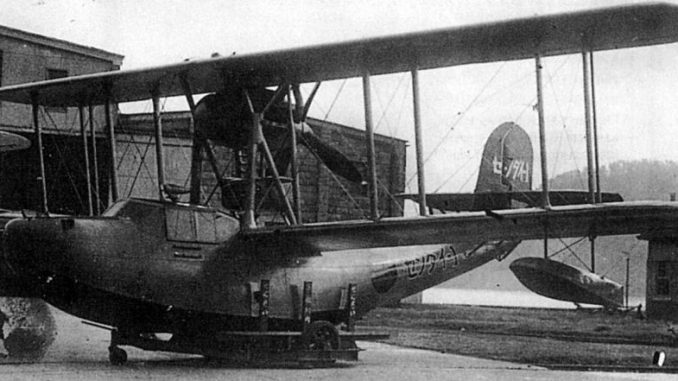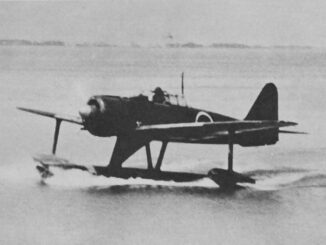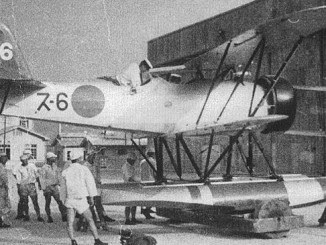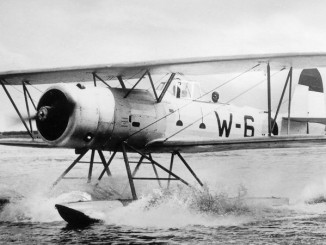
The Japanese plans for war against the United States included using cruisers and other light forces to harry the US Fleet as it sailed across the Pacific. Realising that the sort of attrition envisaged would be best achieved by conducting night attacks, the Japanese Naval Air Service issued a 6-Shi requirement for an cruiser or battleship-borne aircraft capable of shadowing an enemy fleet at night. The Aichi aircraft company responded with a design, the AB-4, that was not accepted for production because the Navy was unhappy with the performance of the machine. However, an updated set of of 9-Shi requirements issued in 1934 prompted Aichi to produce an updated design that was accepted under the designation the E10A.
The E10A was similar in design to the Supermarine Walrus, although the British aircraft flew a year before the Aichi model. It was more stable in the air and easier to control than the AB-4. The aircraft was a biplane, with the Hiro engine mounted in pusher configuration in a nacelle between the two wings. The wings could be folded backwards, a feature which saved a great deal of space on the cramped light cruisers of the Combined Fleet. Like the Walrus, the E10A was a flying boat with small outrigger floats, but it was not equipped with wheeled undercarriage and was therefore not amphibious – it could not operate from aircraft carriers or land bases.
Entering service in 1936, some of the handful of E10As produced served during the first months of the China Incident, flying from cruisers supporting the landings around the coastal cities. E10As were often used to perform night reconnaisance missions of Chinese towns and cities. The aircraft was extremely slow, which meant that it could not operate during daylight hours without protection from fighters.
Just prior to Pearl Harbor, the few E10As still serving with the fleet were withdrawn and transferred back to Japan, where they performed coastal patrols at night. They only served in this role for a few months before they were in turn replaced by newer E11As that were themselves being taken out of fleet service.
Despite the fact that the E10A was no longer a first-line aircraft, in 1942 it was assigned the reporting name “Hank” by Allied intelligence. Confused as to the configuration of the E10A, it was assigned a boy’s name under the mistaken belief that it was a ‘seaplane’ (like the E8N Dave) and not a ‘flying boat’ (like the H6K Emily).
Aichi E10A Type 96 Specifications
| Aichi E10A1 | |
| Role | Night reconnaissance seaplane |
| Crew | 3: Pilot, radioman, gunner |
| Powerplant | 1x Hirosho Type 91 (520hp) |
| Speed | 66mph (cruise) 128mph (max) |
| Ceiling | 13,520ft |
| Range | 1,150 miles (internal) |
| Armament | 1x Type 97 7.7mm Machine Gun |
| Ordnance | |
| Dimensions | 36ft 10in (length) 50ft 10in (wingspan) 14ft 9in (height) |
| Wing Area | 561 sq.ft. |
| Weight | 4,629lb (empty) 7,725lb (gross) |
| Number produced | 15 |




Leave a Reply